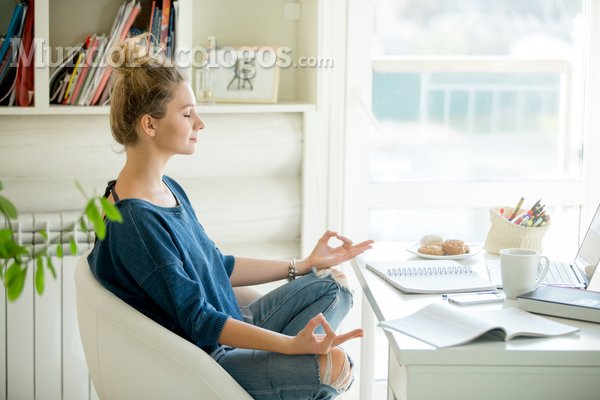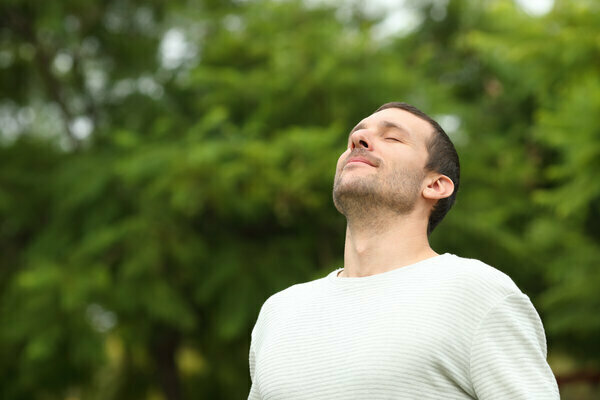The origin of relaxation is as old as humanity. But, we Westerners began to know it from Eastern religions and philosophies such as Zen Buddhism, etc.

What is relaxation? We all know that it is a state of calm, relaxation, serenity… but what it really is, is a care process which causes this effect of calm, and general, physical and mental deactivation.
We cannot cause that state at will, as if suddenly, for want to feel relaxed I’m already like this. Although, in this workshop I am going to help you so that you CAN be there at will and not only punctually, but 24 hours a day, regardless of the task you are doing.
What is relaxation for?
Relaxation serves infinite things such as: reducing the rhythm and intensity of the heart’s movement, reducing the emission of stress hormones called catecholamines and known to all as cortisol, adrenaline, norepinephrine, and others… and we feel them in their forms of anxiety, nervousness, discomfort, fear, etc… relaxation serves to reduce cholesterol levels , increase the production of leukocytes or white blood cells (components of the body’s immune system), increase Alpha and Theta brain waves… among others.
But, relaxation must also be applied with certain precautions in certain cases, in people with heart disease, alterations in the thyroid glands, psychotic diagnoses, hypotension and those who may be medicated with sedatives, hypnotics, insulin, cardiovascular because relaxation can enhance their effects.

Relaxation techniques
exist many “techniques” to feel relaxed, but in this short workshop I want to show you what seems to me to be the fastest and most functional, and is easy to apply in daily life, and in addition, it can be hidden while we relax before any event. , task, person, situation.
This skill consists of using our breathing and the technique is called: slow diaphragmatic breathing (SDL) and I want to highlight the key action of this technique:
To do it we are going to follow these 6 guidelines:
- Try to lie down, recline or sit, put yourself in a position comfortable position for each of you, in a quiet place, comfortable clothes, turn off cell phones, etc. You will need a maximum of 5 minutes, or less.
- Put one hand below the navel and the other above the navel. The navel will be between the thumb of one hand and the little finger of the other.
- Now, take your guts in and out at will, without breathing. Hide and take out the belly. This is the movement that we are now going to do but with breathing.
- Simply close your eyes to concentrate better, breathe in through your nose, inflate your belly, and only move the hand below the navel, but if the hand above moves, it’s normal, the technique also works. As you breathe in slowly by inflating your belly, count mentally from 1 to 4. When you reach 4 you should have your belly full of air outside, but without forcing, without effort, without tension. You hold the air mentally counting 1…and when you say 2 you release it completely through your mouth, without counting, until you completely empty yourself…you start again. This way you do complete inhale-exhale cycles… I guarantee that between the 4th and 5th breath you will already notice it…
- You have to practice every day, 2 or 3 times, do it 30 times each time (you can divide it into series of 10 complete breaths, rest and do another 10, like this 3 times for each practice). At the end of the day you will have trained about 60 or 90 breaths. Do it for 7 days the same. The following week, the same but if you did it lying down, do it sitting. The next time the same thing but standing, the next time the same thing but walking, the next time talking… without realizing it, you will notice that it becomes more and more natural for you and diaphragmatic breathing will become your natural form of daily breathing. . It seems long, but you will be surprised how short it is.
- And finally we are going to create an anchor. When you are relaxed, calm, serene, your muscles are loose, your mind is calm, imagine, think about the word R–E–L–A–X, entertain yourself with it, imagine that you have the R on your forehead, and falls rolling down the body, imagine how the letter E rolls down the chest, the L through the stomach-genitals, the A through the knees and the X coming out through the soles of the feet. Associate, link this word with the state of calm, serenity that you cause with your breathing. Then, all that remains is to activate the anchor. This is done outside of the training session, after a few minutes when you have stopped doing the practice, you voluntarily see the word RELAX on your forehead, you roll it around seeking to cause, at will, the sensations of calm with which the you have linked, associated. Practice. When you have the practice, you will inflate your belly at will.
A hug to everyone.
Juan J. Montaner Psychology Center.








